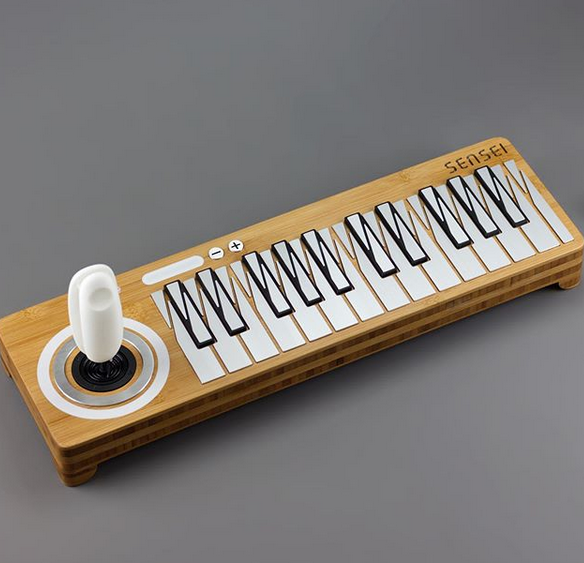Maker, researcher, and music enthusiast Oscar Oomens created this beautiful and unusual synthesizer called the SENSEI for his bachelor’s thesis. The synth features a custom touch interface and wearable gyroscope that allow the user to “shape” sound in multiple dimensions.
The synth features a custom touch interface and wearable gyroscope that allow the user to “shape” sound in multiple dimensions. The main inputs aside from the keys are a joystick with three Force Sensitive Resistors (FSRs) on the grip that Oomens suggests provide control for new sound characteristics including: distance, form, sharpness, richness, and color. A capacitive ring around the joystick allows parameters to be locked and a gyroscopic ring attached to a bracelet allows the user to add vibrato to the touch keyboard and pitch bend segments. Users can also transpose octaves using + and – buttons towards the top of the board.

The board itself is stunning in its manufacture featuring embedded LEDs and soft silicone keys set into wood. Oscar was kind enough to share his parts list in our forum and has added some lovely photos to an Instagram album.
